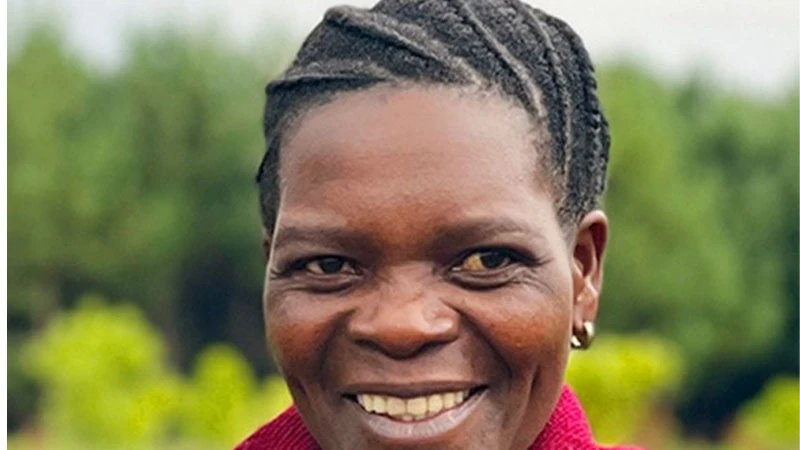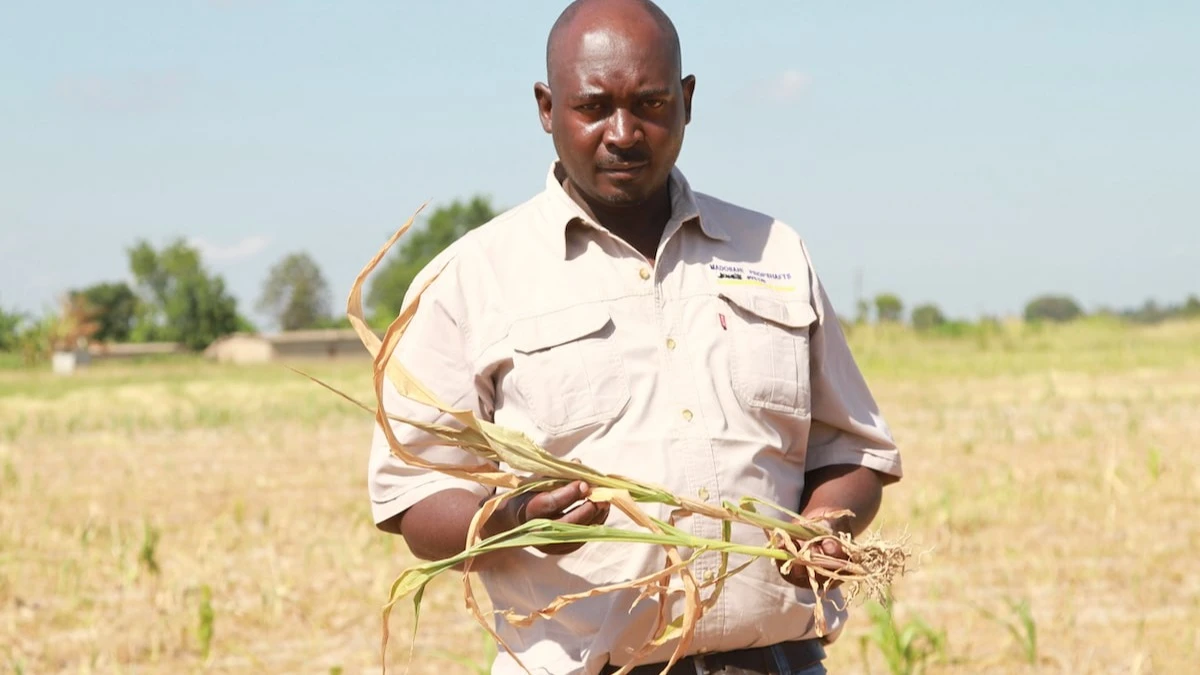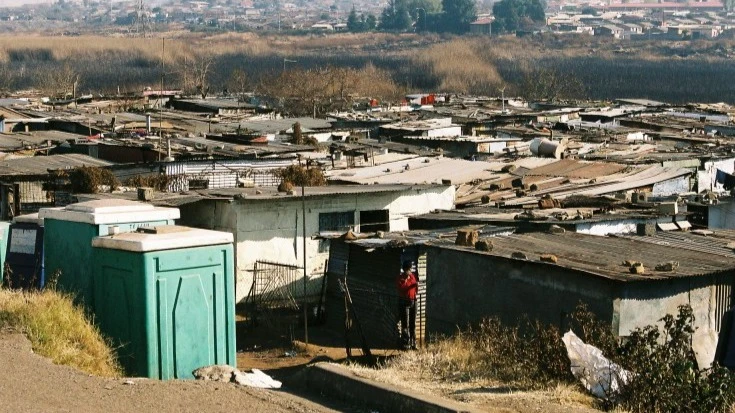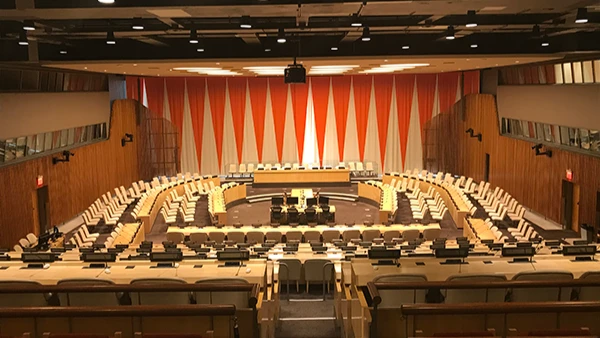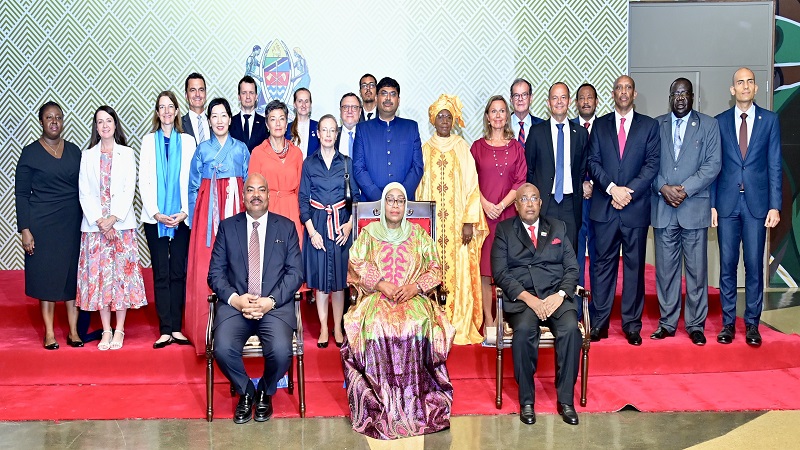World’s record heat is worsening air pollution and health in Global South
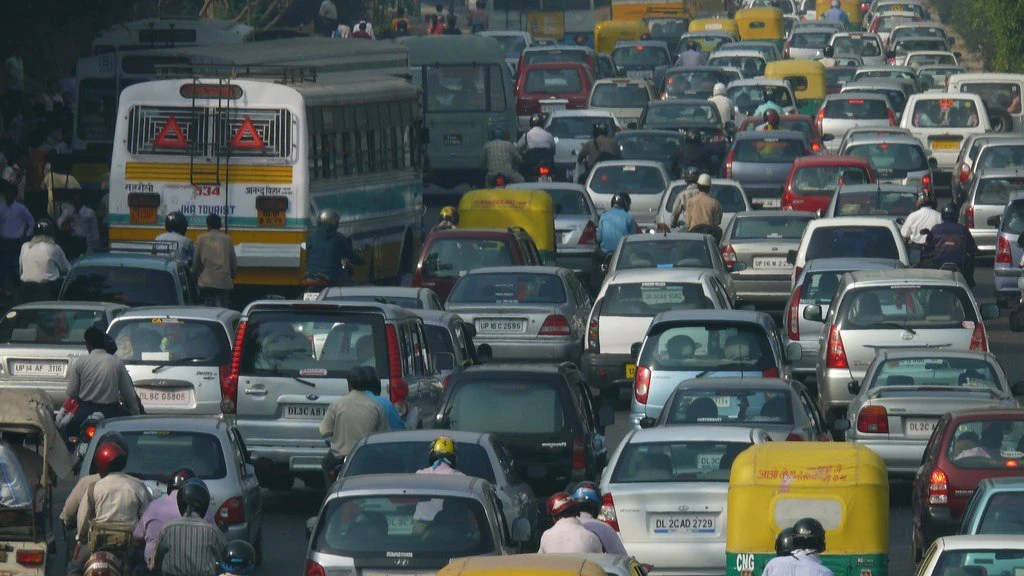
HUMANITY achieved a fateful milestone last year. The European Union’s Copernicus Climate Change Service has officially declared 2024 the hottest year on record, and the first year in history with an average global temperature rising 1.5° Celsius (2.7° Fahrenheit) above the pre-industrial period — significantly increasing dangerous climate risks.
In fact, 2023 and 2024 may well be the hottest years in 100,000 years, with all indicators pointing to it getting hotter, bringing ever-worsening global impacts. “The temperature-related extreme events witnessed [last Norther Hemisphere] summer will only become more intense,” warned Samantha Burgess, deputy director of the Copernicus Climate Change Service.
In 2024, extreme heat enveloped whole regions of the world for weeks on end, with severe unprecedented consequences. A deadly heat wave killed at least 1,300 people during the annual Hajj pilgrimage in Saudi Arabia, while the worst drought in a century gripped Southern Africa, leaving 21 million children malnourished. Record drought also devastated South America, reducing Amazon rivers to their lowest levels ever recorded. North America wasn’t spared either. Heat domes — stalled high pressure systems that retain and intensify temperatures — blanketed vast parts of the U.S. and killed more than 100 people in Mexico.
But less noticed, and harder to track, is the way in which oppressive heat helps degrade air quality, making people sick. While air pollution sources are typically local or regional, the invisible hand of climate change is further deteriorating air quality around the planet.
Stubbornly persistent heat waves, record wildfires, and drastically changing wind and precipitation patterns all “alter the formation, duration and dispersion of air pollution,” notes a World Meteorological Organization bulletin, highlighting the synergistic health effects of global warming.
The Global South, an epicenter of poor air quality, is being especially hard hit. A toxic soup of air pollutants — automotive exhaust fumes over urban India, choking dust clouds blowing across Nigeria, and suffocating wildfire smoke blanketing Brazil — are being made even deadlier by a rapidly destabilizing climate.
2024 was the first year in history seeing an average global temperature rising 1.5° Celsius (2.7° Fahrenheit) above pre-industrial levels.
Ozone over New Delhi
The summer of 2024 in India’s capital, New Delhi, was more brutal than any Kunal Kumar can remember. The city was trapped under the longest heat wave in 13 years. Things were so bad that Kumar, a gig worker who makes food deliveries, was forced some days to give up his outdoor income.
“Better to lose my wages and stay at home than die of a heatstroke,” he said.
Delhi, a sprawling city in northern India, is nestled in the country’s Indo-Gangetic Plain where summer daytime temperatures average 32°C (90°F). But a series of persistent anticyclonic wind circulation events over the northern Indian Ocean, coupled with the fading El Niño, caused clockwise wind gusts to sink over the city, creating a persistent high-pressure heat dome that pushed 2024 temperatures to relentless highs.
For weeks, brutal daytime temperatures stayed above 40°C (104°F), with little respite by night. The city’s solar heat-absorbing built environment made conditions even more miserable and dangerous.
For Kumar, who spends 12 to 15 hours a day on the road making deliveries, the heat was life-threatening — as it was for the rest of the city’s 33.8 million people, many of whom work outside or lack air-conditioning. In Kumar’s cramped South Delhi neighborhood, heat radiated off the walls and street day and night in a textbook example of the urban heat island effect.
He was dehydrated and irritable most days. “Everywhere you look there’s a traffic jam in this city. Stuck in jams, under the hot sun with hot air blowing on your body; it was unbearable,” Kumar remembers.
Normally, air pollution is perceived as a winter problem in Delhi, when a thick blanket of low-altitude smog gets trapped by cool air hanging above the metropolis. That smog is mostly composed of toxic PM2.5 particulates — very tiny particles that lodge in the lungs and can cause cardiovascular and respiratory disease. Every winter, PM2.5 levels peak due to seasonal crop burning and the exploding of fireworks during the Diwali festival, turning Delhi into one of the world’s most polluted places.
But now, as global warming and urban development bring higher temperatures over the city in summer, the co-occurring impacts of intense heat and air pollution compound in less obvious but seriously unhealthful ways.
In hot summer months, the traffic jams Kumar and thousands of gig workers are stalled in every day become hotspots for toxins that include PM2.5 particulates and ground-level ozone. High up in the stratosphere, ozone plays a vital beneficial role, absorbing the sun’s harmful ultraviolet rays. But close to Earth’s surface, it’s a potent air pollutant whose insidious health impacts accrue in the body.
Ground-level ozone is formed when nitrogen oxides and volatile organic compounds (VOCs), emitted from vehicle exhausts and other combustion sources such as factories, react with sunlight. A recent analysis by the Centre for Science and Environment (CSE), a Delhi-based think tank, found that new hotspots for ground-level ozone emerged across the city over the summer. Between April and July 2024, Delhi recorded ground-level ozone readings in excess of safe limits on 102 days, often for more than 13 hours at a stretch, the analysis said. Annual PM2.5 background levels have also risen steadily, driven predominantly by an increase in transportation emissions — traffic that now worsens air pollution in winter and drives ground-level ozone in summer.
Epidemiologist Poornima Prabhakaran, director of the Centre for Health Analytics Research and Trends at Ashoka University, calls the increasing ground-level ozone trend worrying. India has the highest death burden of any nation from chronic obstructive pulmonary disease, attributable to ground-level ozone levels, according to the “State of Global Air” report published annually by U.S.-based Health Effects Institute in partnership with UNICEF; ozone killed 238,000 people in India in 2019.
People also continue breathing other toxic contaminants released from tailpipes and smokestacks. But “The impacts of [these] secondary pollutants have not been given as much attention compared to the impacts of smog and PM2.5, probably because of lack of awareness,” Prabhakaran said.
Prabhakaran is working with scientists internationally, developing databases to track the impacts of air pollution (including PM2.5 and ozone) on a variety of outcomes, such as respiratory and cognitive health functions. “We’re trying to analyze, with data, every health outcome that we can get our hands on,” Prabhakaran said, adding, “Intermediate risk factors like hypertension, high blood pressure, fasting glucose, high lipid levels — all of those cardiovascular outcomes — are known to worsen with even chronic, low-dose [air pollution] exposure.”
Clean air programs have largely failed to improve air quality in India because they’ve been incentivized for dust control, rather than reducing transport and industrial combustion — the biggest sources of contaminants year round. “Our programs need to become more multipollutant-focused, which means taking a whole basket of pollutants [into consideration] like PM2.5, nitrous oxides, and ozone, to track improvements in air quality. Not just the level of dust in the air,” said Anumita Roychowdhary, CSE’s executive director of research and advocacy.
Outdoor workers like Kumar remain very vulnerable to impacts due to their extensive exposure. The Indian government views the booming gig economy positively as an employment generator, at a time when unemployment rates have reached record highs. But those jobs often come at a considerable cost to workers’ long-term health.
“I try not to take days off, even when I’m sick, because it slashes my earnings,” said Kumar. But breathing Delhi’s toxic soup day in and day out could bring on disease and early death.
There’s also an economic cost. Gig workers are often primary family breadwinners, laboring without insurance or paid medical leave. A survey of 10,384 app-based workers across India conducted by the People’s Association in Grassroots Action and Movements and the University of Pennsylvania found that nearly 100% of respondents said they suffered physical and mental health issues due to gig work. Around 43% earned less than 500 rupees ($5.80) a day, and a similar proportion said they took no days off.
“Companies hiring us should be more humane with benefits, wages and time off,” said Kumar, adding, “We work through the rain, through the heat.” It’s heat that scientists say will only intensify in coming years.
Last year, Ewésh Yawalapiti Waurá says he watched helplessly as drought shrank away the life-giving waters of the river near his native village in Xingu Indigenous Park. Flowing through Brazil’s Amazon Rainforest, the Xingu River and its tributaries are vital to the territory’s 16 Indigenous groups.
But drought wasn’t the only challenge faced by residents in 2024: As the river receded below, thick plumes of choking smoke hung overhead, the result of raging wildfires described as the worst the region has seen in recent years.
Xingu Indigenous Park is located where the Amazon Rainforest biome transitions to the tropical Cerrado savanna biome in the central Brazilian state of Mato Grosso. The park, a protected area, was created in 1961 to preserve Indigenous culture and natural biodiversity. Waurá is the executive director of the Xingu Indigenous Land Association (ATIX), a group formed in 1994 to defend the rights of Indigenous peoples living in the Xingu region.
But how, does one protect the people from deadly wildfire smoke? In the past, “it was easy to control the fire[s]. Today any fire gets out of control, spreads out; it’s difficult to control,” Waurá told Mongabay in a video interview. More than 200 firefighters from IBAMA, Brazil’s environmental agency, were sent to douse fires in the Xingu territory last year, with more volunteers joining them in “full force.” But the blazes remained “really out of control,” Waurá said. The local landscape has changed dramatically in recent years, Waurá added. Climate change and deforestation for agribusiness expansion have combined to dry out the region, destroying the remaining rainforest’s ability to resist fire.
Dust over Nigeria’s Kano
In the commercial city of Kano, Nigeria, dust is a daily part of life. “Kano is very hot. Even when there is power and the fan is running, we find it very difficult to sleep in the room [at night] due to the heat, especially during the dry season,” Zahara Usaini, a small-scale trader and 32-year-old mother of three, told Mongabay.
Located in the arid, northern part of Nigeria, Kano’s surrounding landscape is dominated by savanna grasslands. In the past, temperatures there typically rose only as high as 33°C (91°F). But last year, they reached new records — hitting 39°C (102°F), and even 41°C (106°F) in places. A prolonged heat wave, made 10 times more likely due to the effects of climate change, swept the region in 2024.
“The hotness of every dry season is increasing each year. I think it’s from God,” Usaini said.
She felt anxious as she waited at Khalifa Sheikh Isyaku Rabiu Pediatric Hospital, where her youngest child, Hauwa, had been admitted. Hauwa, just 3 years old, had developed a fever that the family initially mistook as a malaria symptom. But when she didn’t respond to treatment by a local hospital, and started to convulse and lose consciousness, Hauwa was transferred to Khalifa and given the correct diagnosis: meningitis.
Top Headlines
© 2025 IPPMEDIA.COM. ALL RIGHTS RESERVED


